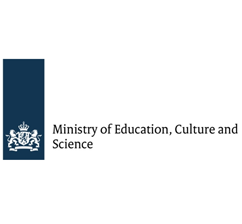Select Topic
- A. Demographics
- B. Transition and access
- C. Types and modes of study
- D. Social background
- E Accommodation
- F. Students’ expenses
- G. Students’ resources
- H. Employment and time budget
-
I. Mobility and Internationalisation
-
Enrolment abroad
- Shares and modes
- Destination country
- Funding
- Obstacles (aggregated)
-
Obstacles (in detail)
-
Students who have been enrolled abroad
- Insufficient skills in foreign language
- Lack of information provided by home institution
- Separation from partner, children, friends
- Additional financial burden
- Loss of paid job
- Lack of motivation
- Low benefit for my studies at home
- Difficult integration of enrolment abroad into the structure of my home study programme
- Problems with recognition of credits gained abroad
- Problems with access regulations to the country of destiantion
- Limited admittance to mobility programmes
- Insufficient marks for studying abroad
-
Students who do not plan an enrolment abroad
- Insufficient skills in foreign language
- Lack of information provided by home institution
- Separation from partner, children, friends
- Additional financial burden
- Loss of paid job
- Lack of motivation
- Low benefit for my studies at home
- Difficult integration of enrolment abroad into the structure of my home study programme
- Problems with recognition of credits gained abroad
- Problems with access regulations to the country of destiantion
- Limited admittance to mobility programmes
- Insufficient marks for studying abroad
-
Students who plan an enrolment abroad
- Insufficient skills in foreign language
- Lack of information provided by home institution
- Separation from partner, children, friends
- Additional financial burden
- Loss of paid job
- Lack of motivation
- Low benefit for my studies at home
- Difficult integration of enrolment abroad into the structure of my home study programme
- Problems with recognition of credits gained abroad
- Problems with access regulations to the country of destiantion
- Limited admittance to mobility programmes
- Insufficient marks for studying abroad
-
Students who have been enrolled abroad
- Other study-related activities abroad
- Language proficiency
-
Enrolment abroad
- J. Assessment of studies and future plans
Select focus group
EUROSTUDENT DATABASE
The database provides key indicators on all topics covered by the EUROSTUDENT survey, for all participating countries.
To browse through the database, please select (on top):
- an indicator within "TOPICS",
- an indicator of the "FOCUS GROUPS" to cross the data,
- at least one of the "COUNTRIES". By default, all Eurostudent 8 countries are selected.
Furthermore, it is possible to switch between current data of the eighth EUROSTUDENT ROUND (2021-2024) to data of the seventh (2018-2021), the sixth (2016-2018), or the fifth (2012-2015) round, if the respective indicators have been used at the time. When switching between rounds, your last country selection is automatically retained, but you can adjust it by clicking on "COUNTRIES".
In addition to the charts and tables with detailed results, you can find (thematic) reports and other publications providing interpretations of several topics at the EUROSTUDENT website.
If you have questions or remarks regarding the EUROSTUDENT database, please feel free to contact us via eurostudent@ihs.ac.at
The database allows you to look at the average of the entire EUROSTUDENT population of the respective countries selected by choosing the focus group "all students". This helps you to identify and compare the general overall trends at a national level. It is, however, also possible to select and compare so-called "focus groups" of students for all indicators. These focus groups are based on the main characteristics of students and their study and living situation.
The database supports cross-country comparisons for both - all students or specific focus groups. Please note, however, that the data visualisation (in charts) has its limitations and if too many countries have been selected at once, viewing and interpreting of the figure might become difficult.
For each country, deviations from the EUROSTUDENT conventions reported by the national research team (such as different wording in the questionnaire, splitting of categories, changes in data cleaning etc.) are noted at the bottom of each page ("country deviation") using separate tabs for the countries selected. Please read them carefully for a meaningful data interpretation. For more information on the general definition and national deviations from the EUROSTUDENT target group conventions, please check > Methodological notes. Be aware that these methodological notes may differ in certain aspects between the different rounds of EUROSTUDENT that can be selected.
All data is available for download. In order to download and save your current selection (specific indicators, countries and focus groups) as a MS Excel, please use the download option at the bottom of each table.
The EUROSTUDENT V target group
- All students in a country, i.e. national and foreign students who are pursuing their studies for a degree in the country of the survey, except students on leave, and excluding students on incoming and outgoing credit mobility.
- Full-time and part-time students by status.
- Students in all ISCED 2011 5, 6 and 7 programmes, regardless of their character as general or professional, as long as the programmes are considered higher education in the national context.
- All higher education institutions offering programmes considered “normal”. In many cases, this means only public, non-specialist institutions of higher education. All national degrees corresponding to ISCED 2011 levels 5, 6 and 7 (e.g. BA, MA, traditional diploma, Lizentiat, national degrees in medicine. Short courses only if they are based on ISCED 5).
- Distance students who study at a “normal” higher education institution, i.e. excluding institutions solely for long distance students such as open universities, Fernuniversität Hagen, and similar.
Notes on national samples and deviations from EUROSTUDENT V standard target group
Not all countries were able to fully comply with the standard target groups. The following list provides additional information on the national samples and indicated deviations from the EUROSTUDENT V conventions (see above).
Austria (AT) The Austrian survey took place in 2011. Since the EUROSTUDENT V core questionnaire was not finished at the time, the Austrian data set does not contain several topics and variables.
Czech Republic (CZ) Higher professional schools are not part of the tertiary system in the Czech Republic. The group of delayed transition students contains students from Slovakia who obtained their leaving qualification in the Czech Republic.
Bosnia and Herzegovina (BA) Data does not cover the Republic of Srpska and District Brčko.
Finland (FI) At Finnish universities, a common practice is for a student to be admitted to study for both a bachelor and master level degree. Bachelor students at universities might not have considered master studies as a continuation of studies.
France (FR) International students are underrepresented.
Georgia (GE) Georgia has taken part in EUROSTUDENT V in the framework of a pilot exercise with the goal of assessing the feasibility of implementing EUROSTUDENT at the national level. The sample encompasses only public universities and national students. Students from non-university institutions did not participate in the survey. These are deviations from the EUROSTUDENT standard target group. Sample universe for this study were all students who are citizens of Georgia and take Bachelor or Master programs in non-specialized public higher education institutions. Based on an existing database, almost 70 % of the students study at public higher education institutions. According to the requirement for this study, stratified random sampling was used to obtain data that is representative for general population. Bachelor and Master programme specializations were de-fined using the National Qualifications Framework (NQF) which was later recoded according to the ISCED 2011 education classification for analyses.
Germany (DE) Only German students and foreign students who obtained their higher education entrance qualification in Germany are included in the sample. Students with foreign citizenship and a higher education entrance qualification obtained abroad (referred to as “Bildungsausländer” in German) were addressed through a different survey and not part of the delivery to EUROSTUDENT. There are therefore deviations from the EUROSTUDENT standard target group and no adequate data to generate the focus group “International students“. Students enrolled in programmes at ISCED 2011 level 5 (Short-cycle tertiary education) are also not included in the German sample as these programmes are typically not considered to be higher education in Germany. According to the definition used for the German national report “Sozialerhebung” – and in line with the national understanding of higher education – the focus group “social background” is defined in the following way: students with higher education background are defined as having at least one parent with a degree attained at university or university of applied sciences (“Universität” or “Fachhochschule”), typically at ISCED 2011 level 6, 7, or 8. Students with parents who attained a degree at a non-academic institution (Fach-, Meister-, Technikerschule, Berufs- or Fachakademie) are counted as “with-out higher education background”.
Italy (IT) All the data refer to university students only. No data on international students. These are deviations from the EUROSTUDENT standard target group.
Latvia (LV) Only full-time students were included in the sampling frame. Montenegro: The EUROSTUDENT sampling frame resulted in a sample that contains only university/faculty students (i.e., no non-university students). These are deviations from the EUROSTUDENT standard target group.
Romania (RO) In Romania, all higher education institutions are considered to be universities. No international students responded although they were included in the sampling frame. The Romanian data are not weighted. Checks with regard to sex, qualification studied for, study intensity and field of study show that the data reasonably match national statistical data.
Russia (RU) The data are not weighted.
Slovakia (SK) The sample is made up solely of students who attended public higher education institutions named University. There are 20 public higher education institutions of which only three are non-universities and none of them has more than 1,000 students. Since one of the criteria in creating the survey sample was the total number of students in each higher education institution and the number of respondents was calculated proportionally, the smallest institutions were not involved to the survey. This was the case for all three public non-universities in our country.
Slovenia (SI) International students cannot be identified due to the high number of missing responses on the identifying variable.
Sweden (SE) All covered higher education institutions in Sweden were categorized as universities, as no non-universities according to EUROSTUDENT conventions could be identified. In Sweden applicants to higher education can apply to a programme or to a course, courses are the building blocks of a programme. However, a large number of courses in the higher education system are not within programmes. These courses are called “freestanding courses” and are elective for students who do not want to follow a program but want to choose the content of their education. These students can also study for a degree but they have to apply each semester for a new course. When a student has the right amount of credits in certain fields the student can apply for a certificate in a general qualification. Since this student group is quite large (1/3 of the FTEs in 2011/2012), respondents who are studying for a degree but have not yet decided what degree they are aiming for, are included in the sample.
Ukraine (UA) The survey was not conducted in Crimea region. The data are not weighted.
Further information can be found in the comprehensive EUROSTUDENT V Synopsis of Indicators (methodological notes are covered in chapter 1).
Focus Group:
Technical notes
Country-specific information
Country deviation
Researchers' comments
Country deviation
Researchers' comments
Country deviation
Researchers' comments
Country deviation
Researchers' comments
Country deviation
Researchers' comments
Country deviation
Researchers' comments
Country deviation
Researchers' comments
Country deviation
Researchers' comments
Country deviation
Researchers' comments
Country deviation
Researchers' comments
Country deviation
Researchers' comments
Country deviation
Researchers' comments
Country deviation
Researchers' comments
Country deviation
Researchers' comments
Country deviation
Researchers' comments
Country deviation
Researchers' comments
Country deviation
Researchers' comments
Country deviation
Researchers' comments
Country deviation
Researchers' comments
Country deviation
Researchers' comments
Country deviation
Researchers' comments
Country deviation
Researchers' comments
Country deviation
Researchers' comments
Country deviation
Researchers' comments
Country deviation
Researchers' comments
Country deviation
Researchers' comments
Country deviation
Researchers' comments
Country deviation



